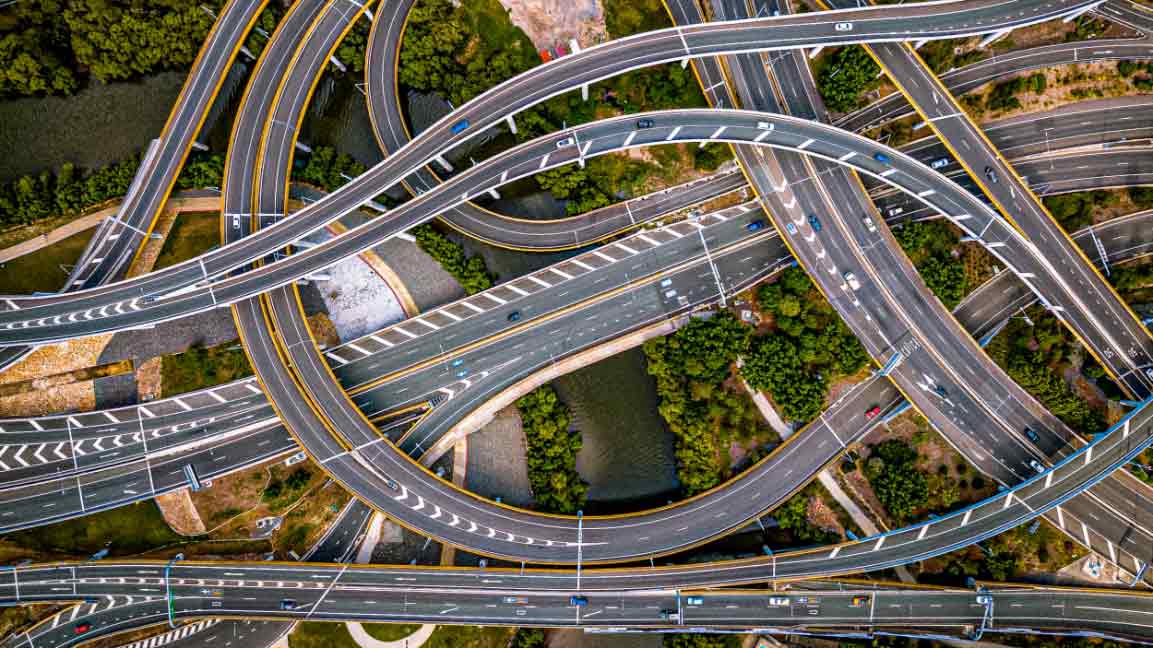- | 9:00 am
One solution to the housing crisis: Shrink roads
Giving up a lane of traffic can mean much larger buildings—and new developments around the world are trying to take advantage.

When a highway was built through the U.K. town of Rochdale in the middle of the last century, it carved through what had been a thriving industrial district. Now, the road is wider than it needs to be to support the current levels of traffic—and some urban planners want to take back some of the space and use one lane to build new housing.
“We were looking at it and wondering, can we undo some of this?” says David Milner, deputy director of Create Streets, an organization that advocates for better urban development. “If we took just one turning lane, out of five lanes, we could create a proper new city block.” By adding the lane to an adjacent vacant lot, there would suddenly be enough room for a much bigger development.
The project is still conceptual, but it’s one example of how designers are trying to reclaim road space. In Bedford, another U.K. town, a planned development that will turn an abandoned police station into new housing will be able to add more units because the street is also being redesigned. A nearby roundabout will be turned into standard intersection, shrinking the street and leaving more room for a 105-unit apartment building, bike and car parking, and green space. “It freed up quite a lot of additional land,” says Simon James, a director a DLP planning, a consulting group that worked on the design.
In another town called Southend-on-Sea, shrinking a sprawling roundabout (as wide as seven lanes in some places), helped make room for multiple new buildings with 1,760 apartments.
Milner argues that this type of conversion should happen more often, both because narrower roads are better for neighborhoods—making it safer to walk, and helping draw more people to an area to shop at local businesses—and because there’s limited land available for housing.
“There’s a huge housing crisis in the U.K.,” he says. “There’s also a huge productivity crisis in many towns and cities outside of London. In one sweep, in a way, we can dial down some of these really nasty, polluting, economically damaging roads, and create new space to put in businesses and homes.”
In the U.S., one road-to-housing conversion happened in Rochester, New York, where a former six-lane highway was replaced by a smaller city street, leaving room for new apartment buildings. That could easily happen in more places.
“The U.S. is full of poorly conceived inner-city highways that are reaching the end of their useful lives and need to be replaced at astronomical cost,” says Jeff Speck, a city planner and author of the book Walkable City. “The wise solution for most of these is to replace them with smaller surface boulevards that bring with them the opportunity to turn highway right-of-way into housing.”
He argues that highway conversions make more sense than using lanes on regular city streets for housing, at least in most cases. “Most street right-of-ways are can only be reduced by a lane or two, which can generate enough extra space for a bike lane or expanded sidewalk but not enough for the addition of housing,” he says. “Moreover, trading street width for a housing tract typically requires a public/private land swap. These are possible, but add enough red tape to only make sense when a significant amount of housing can be added.”
In Boston, Speck’s firm is working on a plan, now in its second design phase, to use excess road space in Kenmore Square to add new housing and public space. “The plan results in considerably more housing than originally conceived, plus a beautiful plaza,” Speck says. The plan would also more than triple the space available for pedestrians.








































